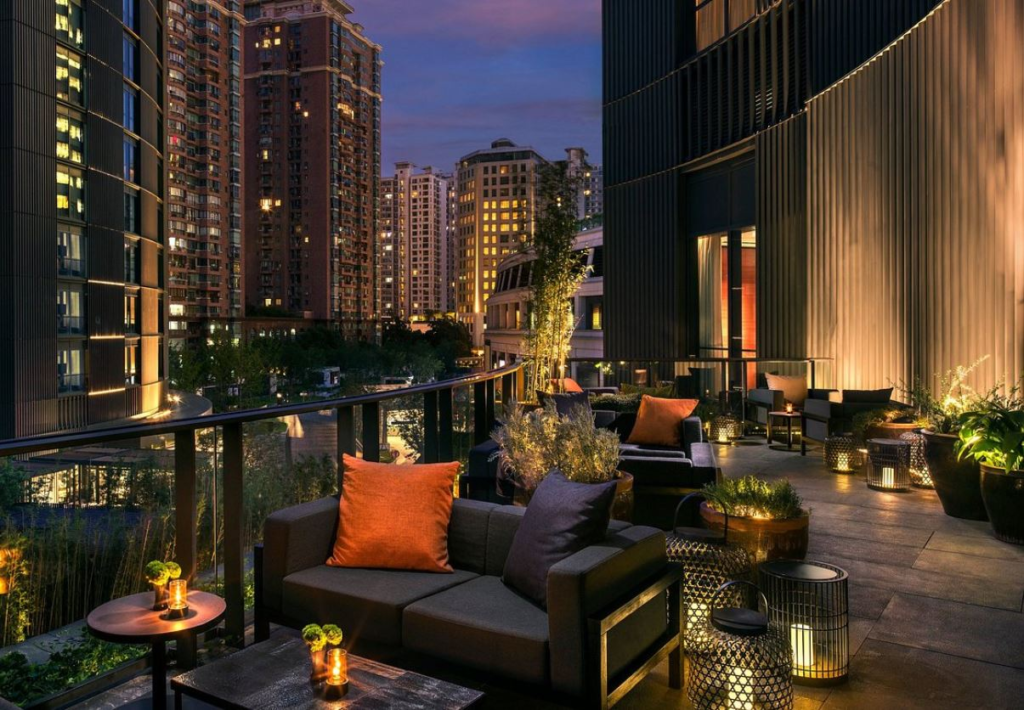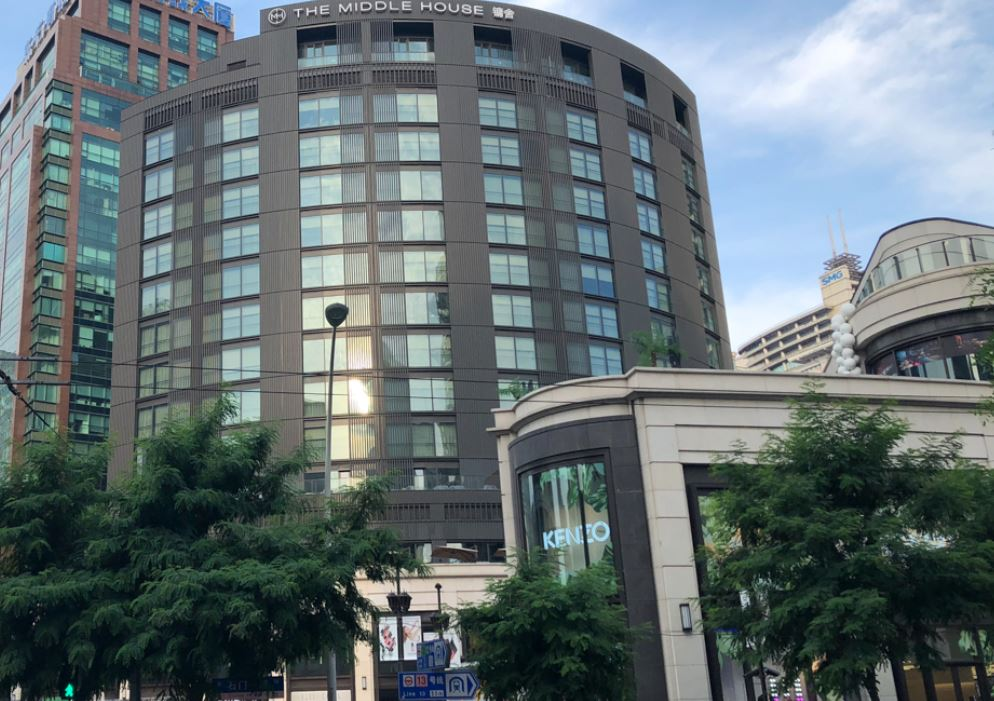
Serene Design-Led Luxury
Shanghai rarely tiptoes. Neon, horns, the soft clatter of mahjong tiles somewhere behind a lane door—it all pushes forward. And then, almost mischievously, a slip of bamboo and charcoal stone invites a change of pace. The Middle House doesn’t grandstand; it lowers the lights and lets the shoulders drop. Not austere, yet impeccable. Urban, yet faintly monastic. One might call it a sanctuary, though that feels a touch earnest; better to say it’s a place where time behaves.
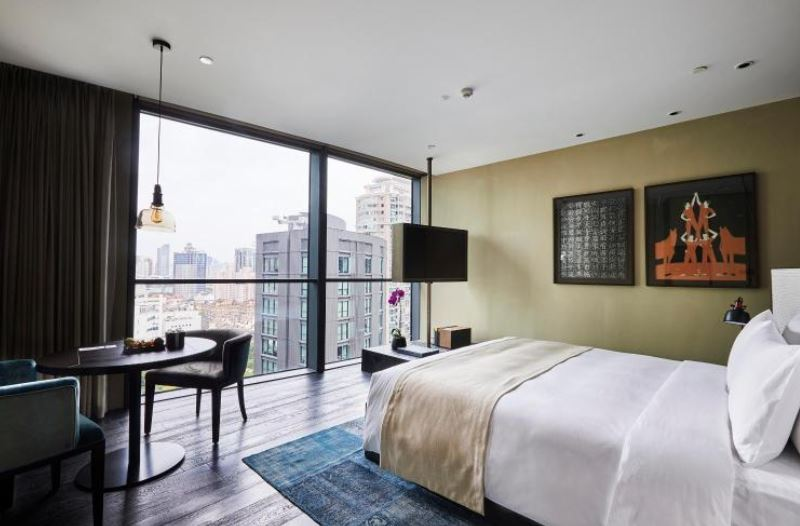
First Impressions
Arrival Experience
The turn off Shimen Yi Road is easy to miss—by design, one suspects. City heat radiates off the pavement, scooters weave like fish in a current, and then the façade appears: calm, measured, a hush in architectural form. A porter moves with unhurried certainty. Doors exhale cool air scented with cedar and tea; the street’s clatter fades as if someone’s thumb pressed a volume slider. Not drama. Just relief.
Lobby & Décor
The lobby prefers restraint over spectacle. Stone, timber, woven screens—textures doing the talking. Lighting is warm and low, the flattering kind that makes redeye pallor behave itself. A few pieces of contemporary Chinese art punctuate the calm without veering into pastiche. Seating rests at conversation height; murmurs carry, never echoes. Staff operate on quiet loops: a bag vanishes, water appears, directions arrive in clear Mandarin or English. Human-scale hospitality wrapped in metropolitan polish.
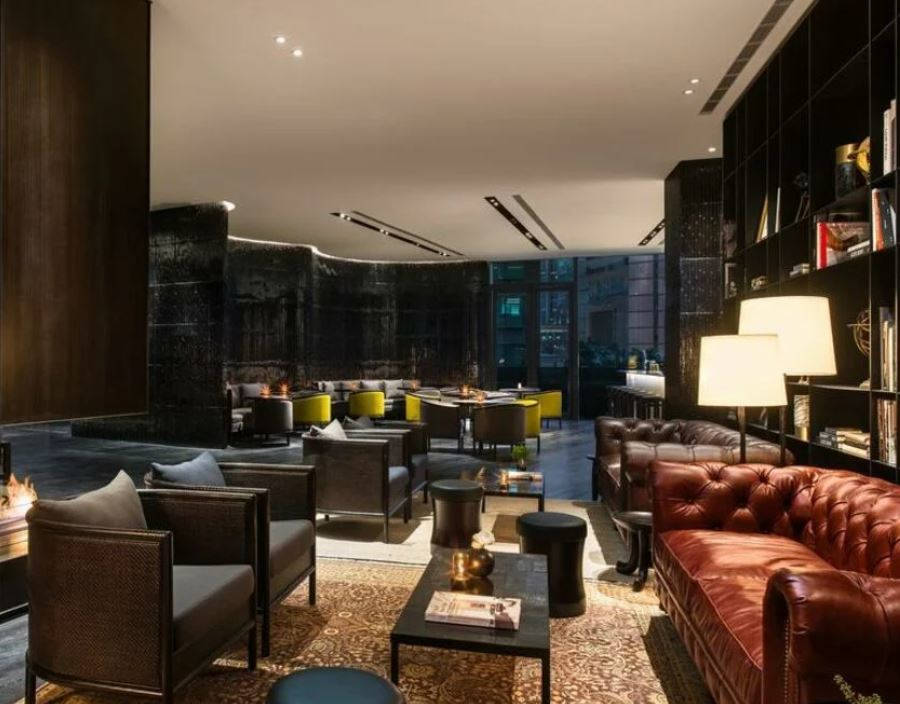
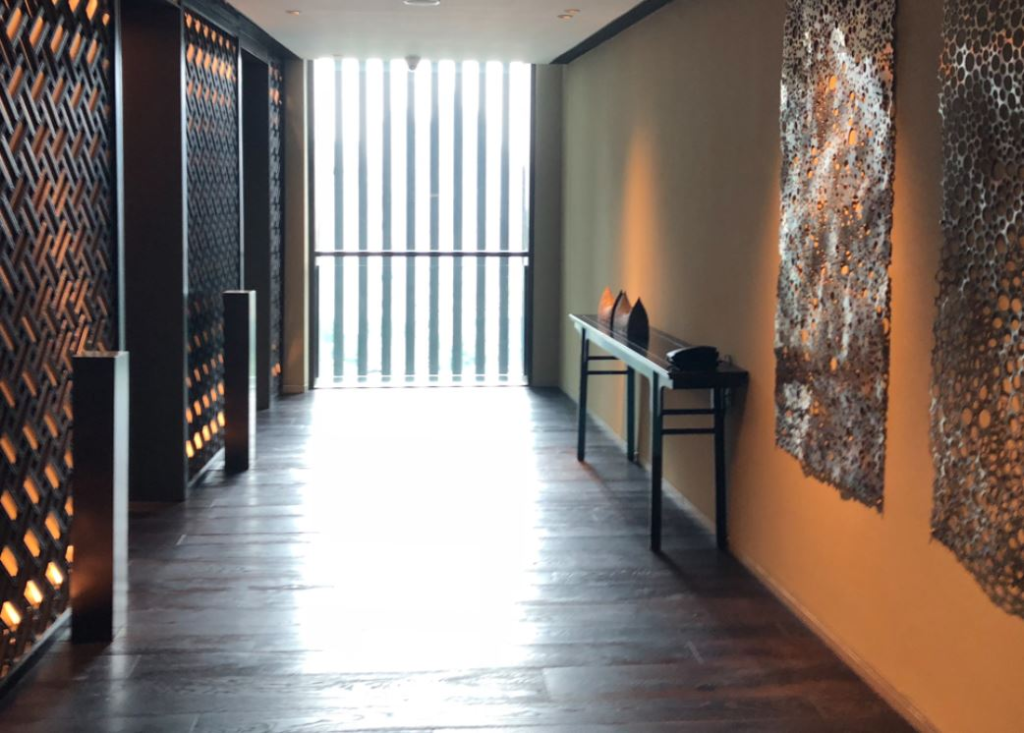
Accommodations
Studios begin around the 50m² (hence the room name Studio 50 and so on) mark and feel larger thanks to floor-to-ceiling glazing. Morning light skims pale oak; at night the skyline glows like a lantern beyond the glass. Beds are properly supportive—no trampoline bounce—dressed in crisp linens. The bathroom reads as spa-adjacent: rainfall shower with committed water pressure, deep soaking tub, and Bamford bath products that lean herbal and clean. Storage is generous; noise, essentially absent. Details matter: the signature tassel “Mr. Goodnight” master switch; Native Union x La Boite speakers; a house yoga mat tucked away for jet-lag stretches.
Other Room Types
Studio 70/90: Bigger footprints, wider views, and bathrooms that invite unhurried rituals.
Residences (1–2 Bedroom): Kitchens for longer stays, washers that save faff, and a homelike rhythm without losing the hotel’s hush.
Balcony/terrace units (select): Not guaranteed, but when present, they make the city feel like theatre rather than noise.
Hotel Facilities & Services
The wellness story sits discreetly below street level. The heated indoor pool glows under hushed lighting; footsteps soften, voices fall to a murmur. Mi Xun Spa blends European cosmeceuticals with Chinese tea-led rituals—treatments from CHA LING, Biologique Recherche, DIBI, INDIBA®, and Bamford form a thoughtful menu that avoids gimmickry. A 24-hour gym anchors the space with proper free weights and machines; steam and sauna round things out.
Service feels instinctive rather than choreographed. Housekeeping is stealthy; turndown is timely without show. Technology stays simple—switches that do what they say, casting a warm, residential glow. Sustainability threads exist (amenities, refillables, lower-key linen policies), though the hotel under-talks them; eco-minded guests may wish for clearer signposting.
Insider Tip: Aim for a mid-afternoon spa slot—post-lunch, pre-commute. The pool, steam and sauna often fall blissfully quiet then, and treatments start on the dot.
Guest Experience
The tone is soft-spoken sophistication. Staff read the room—light humour for the chatty, gentle economy for the weary. The lobby bar hums at civilised volume; laptops open, but you won’t feel you’ve strayed into a co-working space. Evenings drift into amber light and low conversation; mornings begin with coffees that actually taste like coffee. The overall rhythm encourages lingering. Shanghai outside may roar. Inside, nobody needs to.
Ideal Guests & Potential Challenges
Who will love it:
Design purists who favour texture, proportion and negative space over bling
Business travellers needing nerves-off calm within minutes of Jing’an’s meetings and malls
Long-stay guests and families who appreciate service apartments with proper kitchens
Couples after a discreet, grown-up city retreat
Potential challenges:
Grand-arrival seekers may find the entrance almost too subtle
Minimalism can read austere if one expects chandeliers and gilt
Biggest Surprises
- Contemporary Chinese art that rewards a second look rather than a quick selfie
Two in-house restaurants recognised by the MICHELIN Guide Shanghai 2025
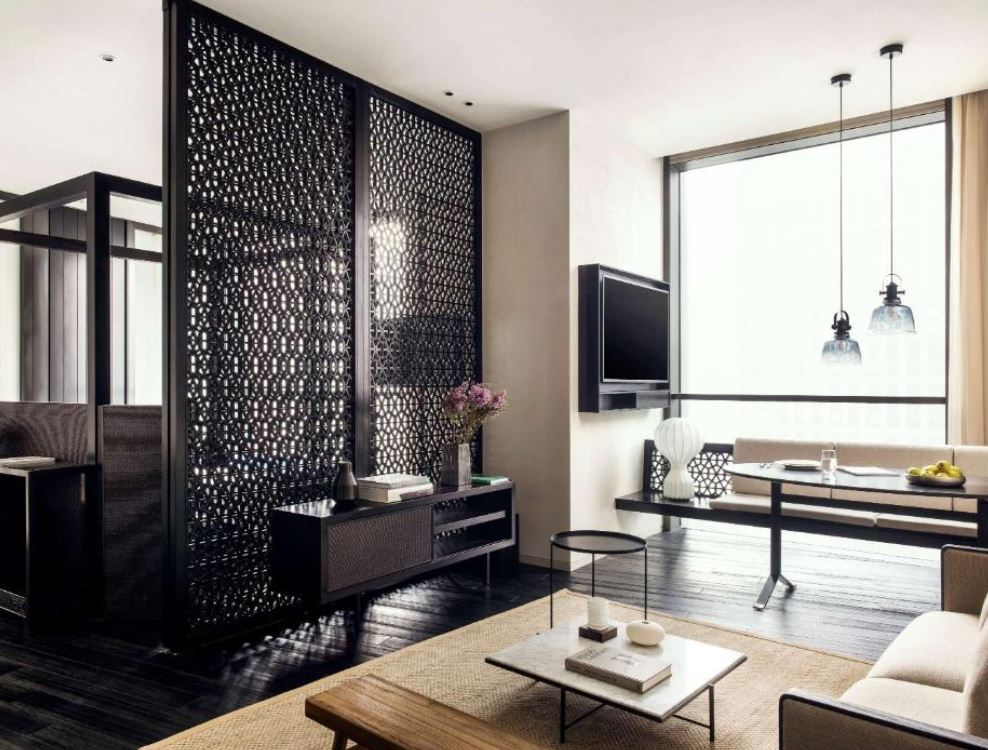
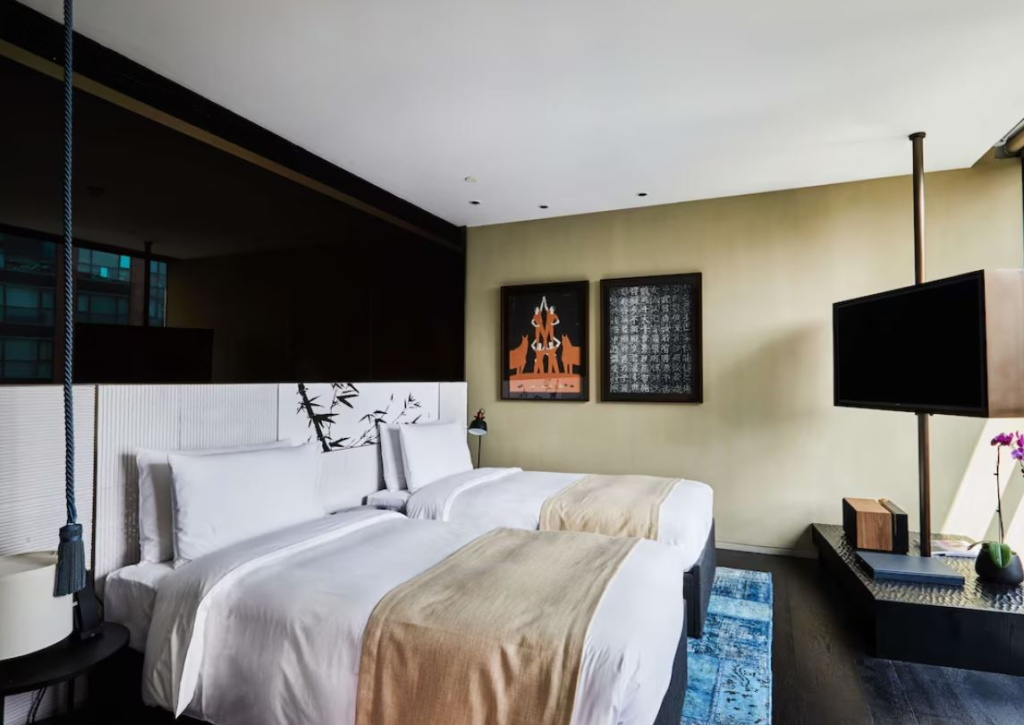
Dining & Leisure
In-House Venues
Sui Tang Li – Contemporary Chinese plates with share-friendly pacing; spice and texture used with restraint. MICHELIN-Selected 2025.
Frasca – Italian with soul and a sociable bar; handmade pastas, seasonal produce, and an ease that suits business lunches as much as lazy Sundays. MICHELIN-Selected 2025.
Café Gray Deluxe – A crescent-shaped lounge with a wrap-around terrace; European-leaning comfort dishes by day and deft cocktails by night.
Local Dining Picks
Fu He Hui (福和慧) – Two-MICHELIN-star temple to plant-led Chinese cuisine; serene rooms, meticulous pacing.
Le Comptoir de Pierre Gagnaire (Capella Jian Ye Li) – French modern classicism in a restored lane-house setting; polished, not prissy.
Jia Jia Tang Bao – No-frills xiaolongbao with proper broth and tender wrappers; go early, bring cash-level patience.
Din Tai Fung (HKRI Taikoo Hui) – Consistent dumplings steps from the hotel; efficient service, good for families and groups.
Location & Things to Do
The hotel sits within the Dazhongli/HKRI Taikoo Hui enclave—shops and galleries around one corner, Jing’an Temple a short stroll the other way. The French Concession is close enough for leafy walks and boutique browsing; the Bund remains an evening ritual, its lit-up facades mirrored in the Huangpu
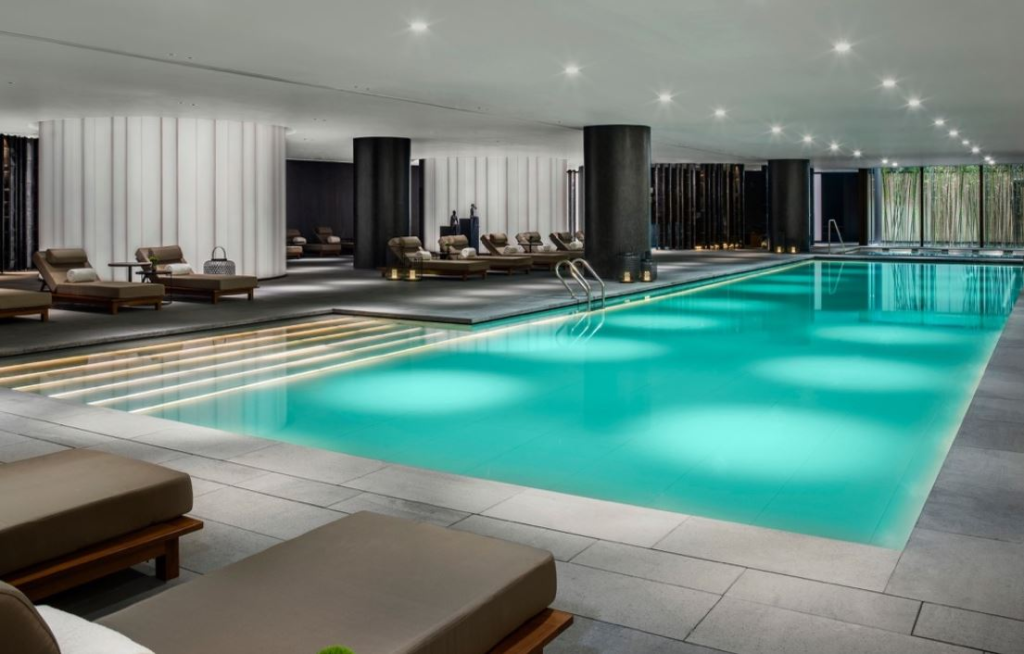
Tips for Prospective Guests
- Reserve a Studio 90 for bigger bathrooms and broader city frames; the extra metres feel meaningful at night.
- Book mid-week dinners at Frasca or Sui Tang Li—hotel guests plus local regulars make weekends buzzy; weekday service feels blissfully unhurried.
- Ask for rooms away from lift cores if you’re a light sleeper; the hotel is quiet, but silence purists will appreciate the buffer.
- Use the residences for longer stays—laundry and kitchens cut the faff of extended city time
Final Thoughts
The Middle House is ideal for travellers who value texture over trophies, discretion over display. Not a stage-set hotel, but a place to slow the script and still feel stitched into the city. For design-minded couples, business travellers with little patience for faff, and long-stayers who crave an apartment without losing hotel polish, it remains one of Jing’an’s most persuasive addresses.
The Middle House Shanghai
A member brand of The House Collective
⭐⭐⭐⭐⭐
📍 No. 366 Shimen Yi Road, Jing’an District, Shanghai 200041, China
📞 +86 21 3216 8199
🌐 Official Website
🛎 BOOK Online
🛎 Check rates on Expedia
111 guestrooms + 102 residences; some with balconies/terraces
🚐 Airport transfer: private car on request; ~45–60 mins to PVG depending on traffic
Photo Credit: Six Senses Yao Noi
Editorial Independence Statement
Editorial integrity is at the heart of every hotel review we publish. The vast majority of our hotel stays are personally paid for by our authors, ensuring we experience the property exactly as a regular guest would.
On occasion, we participate in industry familiarisation stays or sponsored educational events—always with the clear understanding that our assessments remain entirely independent and candid.
Even when travel or accommodation is hosted, we retain complete autonomy over our editorial content. Reviews are our opinion only and are never influenced by sponsorship, incentives, or outside partnerships. Our commitment is to provide honest, unbiased insights and thoughtful critique for the benefit of our readers, helping every traveller make informed decisions with genuine confidence.
